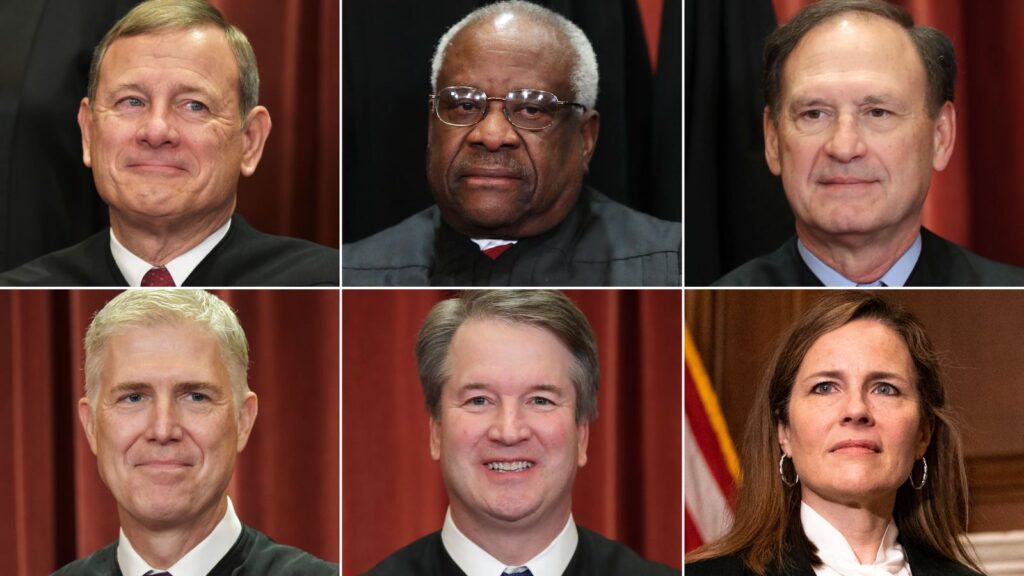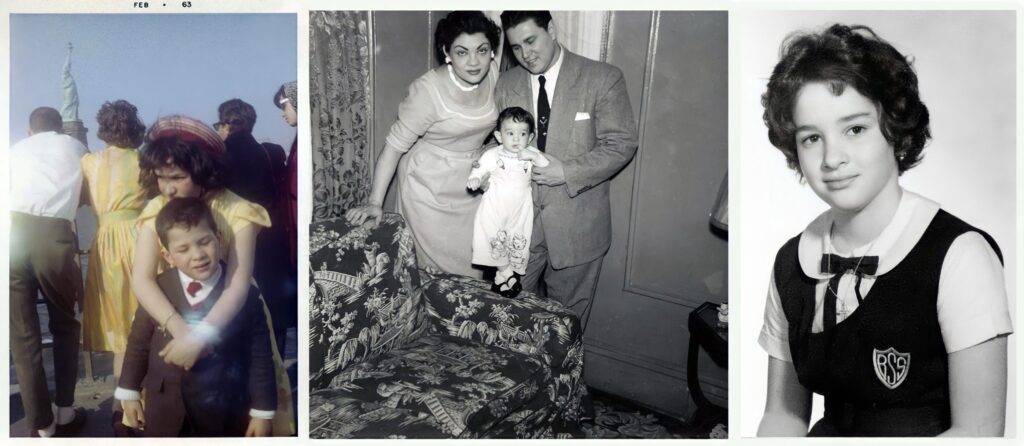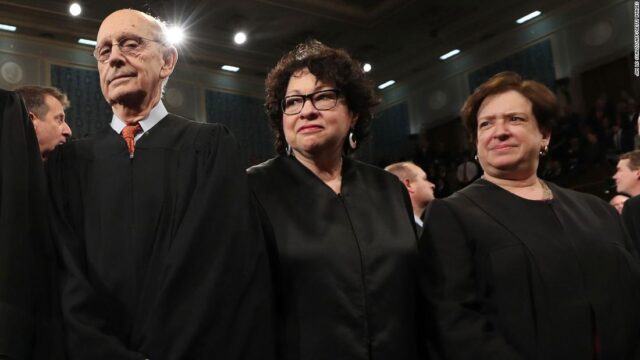Looking beyond the overwhelming conservative votes in the Dobbs v. Jackson Women’s Health Organization case at the dissenting opinions provides a lot of insight into the years of work leading up to and left behind after Roe v. Wade. The narrow scope with which the conservative judges used to view the dispute borrows from the perspectives of much earlier times in which women were not represented in the process of amending or writing the constitution on which judicial cases are based. Though it is a useful form of that historical memory for those judges in renouncing the precedent set by Roe v. Wade through Dobbs, the three dissenting judges, Breyer, Sotomayor, and Kagan, all take issue with the backwardness of the issue at hand.
What the dissenting opinion in the document manages to uphold that the overturning of the Roe v. Wade decision does not is the cultural memory of the societal factors that led up to the case over the course of American history. The concurring judges state time and time again that there is no sign of abortion being “deeply rooted in history” [1], thereby giving them the right to overrule the precedent set in that case.

There is a real history behind what they are completely discrediting, though: the countless thousands who have died in the pursuit of abortions under unsafe circumstances and the women who were given another opportunity after the right to an abortion was made clear through important Supreme Court cases like Roe and Casey. The majority selectively chose information that served their purpose, leaving out British laws from 1644 that American common law based itself on [1]. These laws did not ban abortion, “before ‘quickening’—the point when the fetus moved in the womb.” [1]
However, the very idea of individual rights as mentioned in the constitution is something being questioned by the dissenters and ignored, or glazed over superficially, by the conservative majority, as Roe v. Wade is, “embedded in core constitutional concepts of individual freedom, and of the equal rights of citizens to decide on the shape of their lives. Those legal concepts, one might even say, have gone far toward defining what it means to be an American.” [1] Therein lies the issue: the concurring judges have no issue with throwing away years of law for a less contemporary, and thus outdated, configuration of what is deemed American constitutionality. One of the more liberal judges in particular, Sonia Sotomayor, takes issue with this act directly.
Even before Dobbs v. Jackson went to the Supreme Court, Justice Sonia Sotomayor was adamant about her support for an individual’s right to choose whether or not they would go through with an abortion. The very idea at the core of the Dobbs case obstructs this fundamental constitutional right reaffirmed time and time again, and as Sotomayor is quoted saying, “By so doing, the court leaves all manner of constitutional rights more vulnerable than ever before, to the great detriment of our constitution and our republic.” [2] It is a wonder where this great tenacity for justice and a universal right to choose originates from in Sotomayor’s past.
Drawing from a more universal form of memory to look at the particular, Supreme Court Justice Sonia Sotomayor was born to two Puerto Rican parents and grew up in the Bronx, where she found her love of law after falling in love with the TV show “Perry Mason” [3]. Being the eldest daughter in a single parent family after her father passed most definitely contributed to her adamant and unrelenting spirit. Something else to take notice of is how deeply engrained the Catholic Church was in Sotomayor’s upbringing.

This is a particularly interesting facet of Sotomayor’s personal upbringing. As the Catholic Church is one of the forerunners of the anti-abortion movement in the United States, this aspect of her identity would seemingly be at odds with the larger issue of abortion care. The history of the church’s opinions on abortion is, however, relatively recent [4]. Regardless of the larger, processualism of this aspect of memory, Sotomayor objects to any sort of religious influence in judicial decision-making, reiterating that the majority opinion has broken down, “the wall of separation between church and state that the Framers fought to build.” [5]
Another point of interest in the dissenting opinion is how low-income individuals will be at higher risk because of the Dobbs decision [6], being unable to travel to receive an abortion if their state bans abortion altogether. Knowing that Justice Sotomayor grew up in a single parent family, it would not be a stretch to say that she is able to empathize with these more at-risk female populations.
The case surely means a lot to Justice Sotomayor due to her own private memories and upbringing. Her ability to see the larger picture regardless of her religion is counteracting the larger memory practices at play. Sonia Sotomayor’s experiences with this topic are a perfect representation of how differently a particular memory can shape the world today and how much influence these memories, whether cultural or personal, have even in higher institutions like Supreme Court decisions. Though the Dobbs v. Jackson case has long been decided, the memory of the Roe era is materialized in documents like the dissenting opinion thanks to supporting parties in higher positions like Sonia Sotomayor and their dedication to preserving justice.
(Posted by Lydia Moore, April 21, 2023)
Works Cited
[1] 19-1392 Dobbs v. Jackson Women’s Health Organization (Supreme Court, June 24, 2022). https://www.supremecourt.gov/opinions/21pdf/19-1392_6j37.pdf
[2] Pilkington, E. (2021, December 10). Sotomayor decries abortion ruling but court’s Conservatives show their muscle. The Guardian. Retrieved April 21, 2023, from https://www.theguardian.com/us-news/2021/dec/10/supreme-court-abortion-ruling-texas-ban
[3] “Sonia Sotomayor.” Oyez, www.oyez.org/justices/sonia_sotomayor.
[4] Noonan, John T. Jr., “Abortion and the Catholic Church: A Summary History” (1967). Natural Law Forum. Paper 126. https://scholarship.law.nd.edu/cgi/viewcontent.cgi?article=1125&context=nd_naturallaw_forum
[5] de Vogue, A. (2022, Jun 21). Justice Sonia Sotomayor continues her warnings of a dramatic conservative turn at the Supreme Court. CNN Wire Service http://libproxy.lib.unc.edu/login?url=https://www.proquest.com/wire-feeds/justice-sonia-sotomayor-continues-her-warnings/docview/2678847237/se-2
[6] Chappell, B., & Clark, N. (2022, June 24). The Supreme Court’s majority and dissent opinions on Dobbs reveal a massive schism. NPR. Retrieved April 21, 2023, from https://www.npr.org/2022/06/24/1107445443/supreme-court-majority-and-dissent-opinions-dobbs-reveal-schism
[7] Featured image source of Breyer, Kagan, and Sotomayor: https://www.google.com/url?sa=i&url=https%3A%2F%2Fwww.cnn.com%2F2021%2F09%2F07%2Fpolitics%2Fbreyer-sotomayor-kagan-supreme-court-liberals%2Findex.html&psig=AOvVaw060IROPjN1chnRbN0qlKjm&ust=1682173785986000&source=images&cd=vfe&ved=0CBIQjhxqFwoTCODRyOmXu_4CFQAAAAAdAAAAABAE

This post was super interesting! The dissenting opinion on the Dobbs vs Jackson decision is an important aspect to remember for a fully truthful account of abortion in the US. Your deep dive into the life of Justice Sotomayor was super unique and informative. Her specific experiences in her childhood, with religion and socioeconomic class, show how personal history can shape the views you have as an adult. It also disproves the argument that abortion and faith cannot coexist.